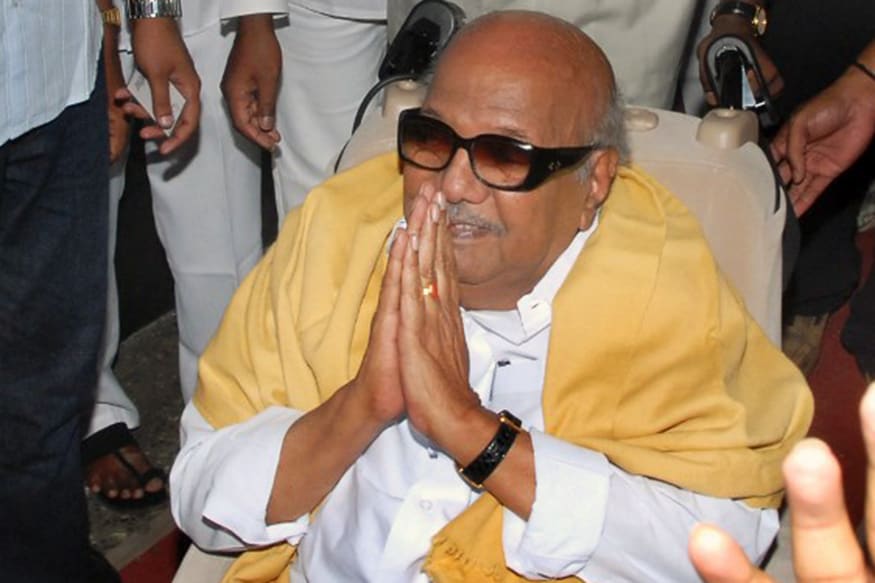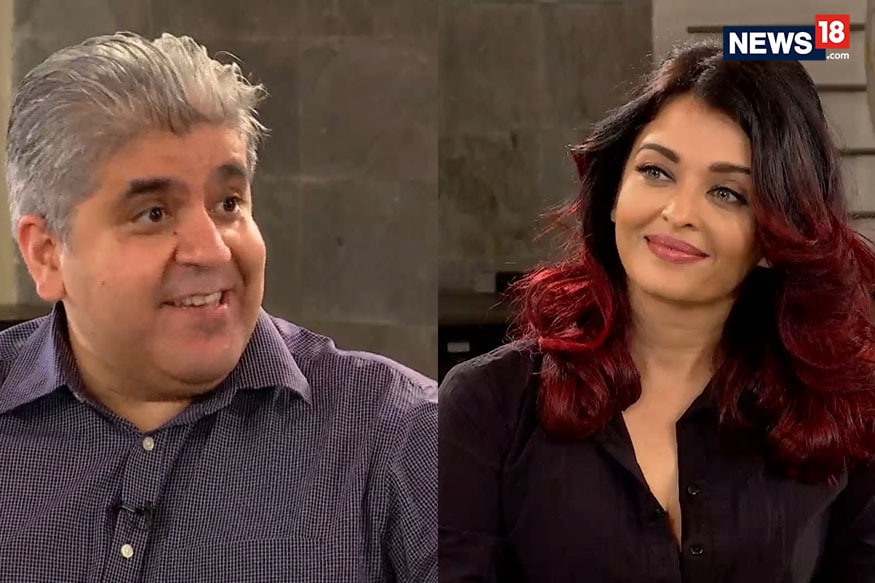How M Karunanidhi's Film Parasakthi Shook the Dogmatic Tamil Society
Karunanidhi, who wrote extremely strong screenplays during his lifetime, had his first brush with fame in Parasakthi, helmed by R. Krishnan and S. Panju.

DMK leader and former Tamil Nadu Chief Minister M. Karunanidhi's health has passed away. he was 94.
Loading...
Nobody, just nobody had the faintest inkling that the 1952 film Parasakthi (meaning Goddess) would attain such a cult status. A Tamil film based on a play with the same title by Pavalar Balasundaram, Parasakthi created a storm in the suffocating and conservative Tamil society, dictated and ruled by Brahmins – who used religion to scare and subjugate the poor, the underprivileged and the lower castes in the Hindu religious hierarchy.
With a passionately fiery script written by a relatively young Muthuvel Karunanidhi – who became the Chief Minister of Tamil Nadu on five occasions – and acted out by a rank newcomer, Sivaji Ganesan – who later attained a star status with his dramatic dialogue delivery, though exaggerated and terrifyingly theatrical, Parasakthi did, however, make its mark. Not quite as a great piece of cinema, but as a powerful and socially relevant document that questioned blind religious beliefs responsible for unnecessary caste hierarchy.
Karunanidhi, who wrote extremely strong screenplays during his lifetime, had his first brush with fame in Parasakthi, helmed by R. Krishnan and S. Panju. The dialogues of the film sliced through priesthood, religion and the very existence of god. And Ganesan's loud dramatics, dipped in the acidic and acerbic, were like darts which targeted age-old customs and practices that were often meant to keep the poor and the lower castes in check.
For Karunanidhi, who had launched his party, Dravida Munnetra Kazhagam in 1949, Parasakthi, which came three years later, proved to be a marvellous opportunity. He used Ganesan and others actors, like S. V. Sahasaranamam, S. S. Rajendran and Pandari Bai as mouthpieces (as Karunanidhi would later use M G Ramachandran, who also went on to become Tamil Nadu Chief Minister) to air his radically rationalist ideas. There were plenty of digs at mythology and casteism, and the film opened with a long song on the glories of Dravidian heritage.
Obviously, Parasakthi seemed scandalous to a placid, god-fearing community, and the censors at first refused to issue a certificate. Eventually, a special committee was set up and the film was passed.
On the face of it, Parasakthi is an innocuous story of three brothers, who live in Rangoon during World War II. The war leads to the three brothers being separated, and the youngest, Gunasekaran (Ganesan), travels to Madras to find his sister. Widowed with a child, she faces the most brutal form of cruelty. About to be raped by a temple priest, she is saved in the nick of the moment by Gunasekaran, who, in a fit of rage, kills the villain.
During a court case which follows Gunasekaran's arrest, he delivers one of the most poignant speeches, lambasting a social order that looks the other way when men in power – moneyed or religious – commit heinous crimes like rape.
Parasakthi's dialogues, penned by Karunanidhi, became a rage in a state where caste equations for centuries had created a huge turmoil in the social fabric. There was much resentment, there was much pain and there was much desperation. And Karunanidhi's script and dialogues as well as Ganesan's rabble-rousing speeches came as a balm to soothe a society that lay suffering.
(Gautaman Bhaskaran is an author, commentator and movie critic, who has been writing on Indian and world cinema for close to four decades)
Also Watch
With a passionately fiery script written by a relatively young Muthuvel Karunanidhi – who became the Chief Minister of Tamil Nadu on five occasions – and acted out by a rank newcomer, Sivaji Ganesan – who later attained a star status with his dramatic dialogue delivery, though exaggerated and terrifyingly theatrical, Parasakthi did, however, make its mark. Not quite as a great piece of cinema, but as a powerful and socially relevant document that questioned blind religious beliefs responsible for unnecessary caste hierarchy.
Karunanidhi, who wrote extremely strong screenplays during his lifetime, had his first brush with fame in Parasakthi, helmed by R. Krishnan and S. Panju. The dialogues of the film sliced through priesthood, religion and the very existence of god. And Ganesan's loud dramatics, dipped in the acidic and acerbic, were like darts which targeted age-old customs and practices that were often meant to keep the poor and the lower castes in check.
For Karunanidhi, who had launched his party, Dravida Munnetra Kazhagam in 1949, Parasakthi, which came three years later, proved to be a marvellous opportunity. He used Ganesan and others actors, like S. V. Sahasaranamam, S. S. Rajendran and Pandari Bai as mouthpieces (as Karunanidhi would later use M G Ramachandran, who also went on to become Tamil Nadu Chief Minister) to air his radically rationalist ideas. There were plenty of digs at mythology and casteism, and the film opened with a long song on the glories of Dravidian heritage.
Obviously, Parasakthi seemed scandalous to a placid, god-fearing community, and the censors at first refused to issue a certificate. Eventually, a special committee was set up and the film was passed.
On the face of it, Parasakthi is an innocuous story of three brothers, who live in Rangoon during World War II. The war leads to the three brothers being separated, and the youngest, Gunasekaran (Ganesan), travels to Madras to find his sister. Widowed with a child, she faces the most brutal form of cruelty. About to be raped by a temple priest, she is saved in the nick of the moment by Gunasekaran, who, in a fit of rage, kills the villain.
During a court case which follows Gunasekaran's arrest, he delivers one of the most poignant speeches, lambasting a social order that looks the other way when men in power – moneyed or religious – commit heinous crimes like rape.
Parasakthi's dialogues, penned by Karunanidhi, became a rage in a state where caste equations for centuries had created a huge turmoil in the social fabric. There was much resentment, there was much pain and there was much desperation. And Karunanidhi's script and dialogues as well as Ganesan's rabble-rousing speeches came as a balm to soothe a society that lay suffering.
(Gautaman Bhaskaran is an author, commentator and movie critic, who has been writing on Indian and world cinema for close to four decades)
Also Watch
 Aishwarya Rai Bachchan Talks About Fanney Khan, Being Judged And More
Aishwarya Rai Bachchan Talks About Fanney Khan, Being Judged And More
 Saturday 28 July , 2018
Rajeev Masand Interviews Tom Cruise For Mission Impossible: Fallout
Saturday 28 July , 2018
Rajeev Masand Interviews Tom Cruise For Mission Impossible: Fallout
 Thursday 02 August , 2018
Fanney Khan: Anil Kapoor, Rajkummar Rao, Pihu Sand On Why You Should Stop Worrying About How You Look
Thursday 02 August , 2018
Fanney Khan: Anil Kapoor, Rajkummar Rao, Pihu Sand On Why You Should Stop Worrying About How You Look
 Tuesday 31 July , 2018
Akshay Kumar Chats About Gold, Twinkle's New Book And More
Tuesday 31 July , 2018
Akshay Kumar Chats About Gold, Twinkle's New Book And More
 Friday 20 July , 2018
Is Janhvi Kapoor-Ishaan Khatter Starrer Dhadak As Compelling As Sairat?
Friday 20 July , 2018
Is Janhvi Kapoor-Ishaan Khatter Starrer Dhadak As Compelling As Sairat?

Aishwarya Rai Bachchan Talks About Fanney Khan, Being Judged And More

Saturday 28 July , 2018
Rajeev Masand Interviews Tom Cruise For Mission Impossible: Fallout

Thursday 02 August , 2018
Fanney Khan: Anil Kapoor, Rajkummar Rao, Pihu Sand On Why You Should Stop Worrying About How You Look

Tuesday 31 July , 2018
Akshay Kumar Chats About Gold, Twinkle's New Book And More

Friday 20 July , 2018
Is Janhvi Kapoor-Ishaan Khatter Starrer Dhadak As Compelling As Sairat?
Loading...
Recommended For You
 Meghan Markle Suffers Wardrobe Malfunction at Prince Harry's Friend's Wedding
Meghan Markle Suffers Wardrobe Malfunction at Prince Harry's Friend's Wedding Maruti Suzuki Swift ZXi+ and ZDi+ Variants with Automatic Gear Shift Launched in India for Rs 7.76 Lakh
Maruti Suzuki Swift ZXi+ and ZDi+ Variants with Automatic Gear Shift Launched in India for Rs 7.76 Lakh![Watch Indian Air Force MIG 29 Fighter Jet Beat Lamborghini Huracan Supercar in a Drag Race [Video] Watch Indian Air Force MIG 29 Fighter Jet Beat Lamborghini Huracan Supercar in a Drag Race [Video]](https://images.news18.com/ibnlive/uploads/92x60/jpg/2018/08/Lambo-Mig-1.jpg) Watch Indian Air Force MIG 29 Fighter Jet Beat Lamborghini Huracan Supercar in a Drag Race [Video]
Watch Indian Air Force MIG 29 Fighter Jet Beat Lamborghini Huracan Supercar in a Drag Race [Video] Baidu Ready to Beat Google if US Firm Returns to China: CEO
Baidu Ready to Beat Google if US Firm Returns to China: CEO Monsoon 2018 New Car Deals and Discounts in August - Maruti Suzuki Ciaz, Hyundai Grand i10, Mahindra XUV500
Monsoon 2018 New Car Deals and Discounts in August - Maruti Suzuki Ciaz, Hyundai Grand i10, Mahindra XUV500
Photogallery
Loading...
Loading...


 2-min read
2-min read



